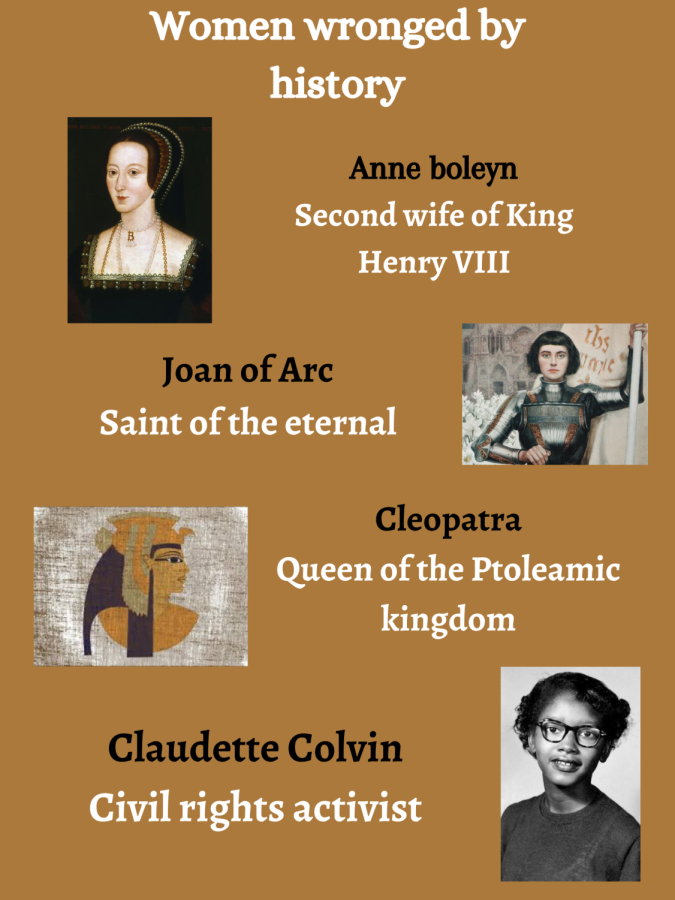What history got wrong
Women whose stories history has replaced; and who they really were
May 31, 2023
It’s easy for stories to get twisted in history, several versions of one topic are heard all around the world.
For women in history, this is all too true. Unfortunately, their stories are usually twisted in negative contexts. They lose credit for things they did, and things they do get credit for are flipped to seem awful. They’re easily shamed and made out to be villains.
History textbooks and websites spread new stories and theories about them, and cause people to get the wrong idea. There are several women in history that so many people don’t know who they actually were.
Anne Boleyn
Anne Boleyn was the second wife of King Henry VIII. Her story is depicted in the popular musical “Six” that came out in 2017.
Boleyn was one of the most powerful women in the world during the 16th century. In her time period she was painted as money hungry, shallow and even a witch who enchanted the king.
Boleyn was beheaded in 1536 on the accusations of adultery, after being queen for just three years.
Though this is often the main focus of Boleyn’s story, that’s not all there is. Henry VIII was a corrupt and paranoid king. Boleyn gave birth to a daughter in 1533, but failed to ever produce a male heir.
Cleopatra
Cleopatra is arguably one of the most infamous women in history.
Cleopatra ruled over Egypt for 21 years. She became queen at the age of 18 and died at 39. She was the only woman in her time to rule alone.
Sadly, she isn’t remembered for her genuine intelligence, power, or influence, but for her romances. “Her story is constructed as much of male fear as of fantasy,” Smithsonian said in an article.
She shares a similar tragedy to Anne Boleyn. A representative of how quick society is to judge women, and how long it stays. She’s nothing short of an example of how powerful men in history will be praised, but powerful women in history will become nothing but a warning.
Her story has been poisoned by misogyny and put into a small box based on nothing but assumption.
She guided a country in the Mediterranean through drought and hunger, and regulated an economy. She’s so much more than she’s modernly recognized as.
Claudette Colvin
Claudette isn’t really an example of what history says about women; instead what they don’t say.
Claudette Colvin was a fifteen-year-old girl who refused to give up her seat on the bus just nine months before Rosa Parks did.
Colvin was on the way home from her high school in March of 1955 when she refused to give up her seat. The bus driver told her to move, and she refused, saying she’d simply pay the fine that would be given and that it was her constitutional right. Two officers arrested her on the bus.
“All I remember is that I was not going to walk off of that bus voluntarily,” Colvin said in an interview with National Public Radio.
Most people have no idea who Claudette was, or what she did. Her story isn’t told nearly as frequently as it should be.
In May of the same year, Colvin went to trial. She was charged with three crimes, two of them later being dropped. Out of disturbing the peace, breaking the segregation law, and assaulting police officers, the last was the only one that stuck, according to Zin Education Project.
Claudette was a civil rights activist who refused to back down at just 15.
Her story could be the starting point for so many young activists. Not only that, it’s a remarkable story of using your voice when you’re given the chance.


